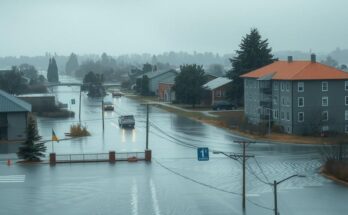A 5.9 magnitude earthquake struck the west coast of Colombia, reported by GFZ. While the quake occurred at significant depth, the geological context necessitates ongoing vigilance in the region due to its susceptibility to tectonic activity.
A 5.9 magnitude earthquake was reported near the west coast of Colombia, as confirmed by the GFZ German Research Centre for Geosciences. The seismic event occurred at a depth likely to have a minimal impact on major populated areas, although local communities may have felt tremors. Such occurrences are not uncommon in the region, due to its geological activity associated with tectonic plate movements, warranting ongoing monitoring by geological agencies.
Colombia is situated along the Pacific Ring of Fire, which is characterized by a high level of tectonic activity, including frequent earthquakes and volcanic eruptions. The west coast, in particular, is susceptible to seismic events due to the convergence of the Nazca and South American tectonic plates. Earthquake preparedness and response protocols are critical for residents in this area, as they are frequently exposed to geological hazards that can lead to significant consequences.
In summary, the recent earthquake of magnitude 5.9 that struck near the west coast of Colombia highlights the inherent seismic risks faced by the region. While the immediate impact may not lead to major damage, continuous monitoring and preparedness measures are essential to ensure public safety and mitigate potential hazards in future seismic activities.
Original Source: www.jpost.com




